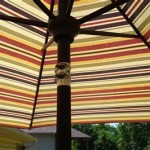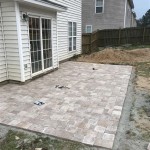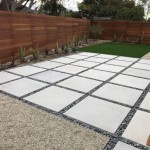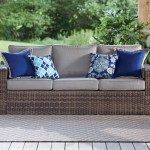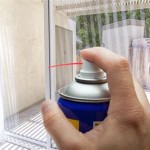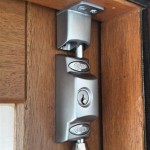Small Patio Table and Chairs with Umbrella Hole: A Comprehensive Guide
Outdoor living spaces, regardless of size, offer opportunities for relaxation and enjoyment. For those with limited patio or balcony areas, selecting appropriately sized furniture is crucial. A small patio table and chairs with an umbrella hole provides a functional and space-conscious solution, allowing for comfortable dining and shade without overwhelming the available area. This article will explore the various factors to consider when choosing this type of furniture, including materials, styles, dimensions, and maintenance.
Material Considerations for Durability and Aesthetics
The material composition of a small patio table and chairs significantly impacts its durability, aesthetic appeal, and maintenance requirements. Common materials include wood, metal, resin, and composite materials, each offering distinct advantages and disadvantages in terms of weather resistance, longevity, and visual style.
Wood: Wood furniture offers a classic and natural aesthetic. Teak, cedar, and eucalyptus are popular choices due to their inherent resistance to rot and insects. Teak is particularly prized for its durability and ability to withstand harsh weather conditions. However, wood requires regular maintenance, including cleaning, sealing, and oiling, to prevent warping, cracking, and fading. The specific maintenance needs depend on the type of wood and the climate.
Metal: Metal furniture, such as aluminum and wrought iron, offers strength and durability. Aluminum is lightweight, rust-resistant, and available in various finishes. Wrought iron is heavier and more substantial, providing a traditional and elegant look. While durable, wrought iron can rust if not properly protected with a powder coating or paint. Metal furniture generally requires less maintenance than wood, typically involving occasional cleaning with soap and water.
Resin: Resin furniture, particularly polypropylene resin, is a cost-effective and low-maintenance option. It is lightweight, weather-resistant, and available in a wide range of colors and styles. Resin furniture is generally resistant to fading, cracking, and peeling. However, it may not offer the same level of aesthetic appeal as wood or metal. Cleaning resin furniture typically involves wiping it down with a damp cloth or hose.
Composite Materials: Composite materials, such as recycled plastic lumber, offer a blend of durability and sustainability. These materials are resistant to rot, insects, and weathering, and they often require minimal maintenance. Composite furniture can mimic the look of wood without the associated maintenance requirements. The initial cost of composite furniture may be higher than resin, but its longevity and low maintenance can make it a worthwhile investment.
When selecting a material, consider the climate, desired aesthetic, and maintenance preferences. In hot and humid climates, weather-resistant materials like aluminum, resin, or composite are often preferable. For a traditional and elegant look, wood or wrought iron may be considered, but the associated maintenance should be factored in.
Style and Design Features for Small Spaces
The style and design of a small patio table and chairs contribute to the overall aesthetic of the outdoor space and influence its functionality. Selecting a style that complements the existing decor and maximizes space utilization is essential. Considerations include the shape of the table, the style of the chairs, and the presence of features like folding or stacking capabilities.
Table Shape: Round or square tables are generally more suitable for small patios than rectangular tables. Round tables promote conversation and can be more easily maneuvered around in tight spaces. Square tables provide a stable surface and can be placed against a wall or corner to save space. Rectangular tables, while offering more surface area, can take up considerable space and may not be ideal for very small patios.
Chair Style: Chairs should be comfortable and appropriately sized for the table. Options include armchairs, side chairs, and folding chairs. Armchairs provide more support but can take up more space. Side chairs are more compact and can be easily tucked under the table when not in use. Folding chairs offer the most flexibility, allowing for easy storage when extra seating is not needed. Choose chairs that complement the table's style and material.
Folding and Stacking Capabilities: For very small patios or balconies, furniture with folding or stacking capabilities can be particularly beneficial. Folding tables and chairs can be easily stored when not in use, freeing up valuable space. Stacking chairs allow for efficient storage and can be easily pulled out when needed. These features are particularly useful for maximizing the functionality of limited outdoor areas.
Umbrella Hole Placement and Size: The umbrella hole should be strategically placed in the center of the table to provide balanced shade. Ensure the size of the hole is compatible with the diameter of the umbrella pole. Some tables feature adjustable umbrella hole rings to accommodate different pole sizes. Consider the height of the umbrella when selecting the table and chairs to ensure adequate headroom.
Beyond functionality, the style of the furniture should align with the overall aesthetic of the outdoor space. Coastal styles often incorporate light colors and natural materials like wicker or rattan. Modern styles may feature clean lines, minimalist designs, and materials like metal or concrete. Traditional styles may include ornate details and darker wood finishes. Choosing a style that complements the existing decor creates a cohesive and inviting outdoor space.
Dimensions and Space Planning for Optimal Functionality
Accurate measurements and careful space planning are essential for selecting a small patio table and chairs that fit comfortably within the available area. Overcrowding can make the space feel cramped and uncomfortable, while undersized furniture may look out of place. Consider the dimensions of the patio, the placement of doorways and walkways, and the desired functionality when choosing the size and configuration of the furniture.
Measuring the Space: Before purchasing any furniture, carefully measure the length and width of the patio or balcony. Note any obstructions, such as walls, railings, or planters. Consider the placement of doors and walkways and ensure that there is adequate clearance for movement around the furniture. Ideally, allow at least 3 feet of space for walking around the table and chairs.
Table Dimensions: The size of the table should be proportionate to the size of the patio and the number of people who will be using it. For a small patio, a table with a diameter of 30 to 48 inches is typically sufficient for two to four people. Consider the shape of the table and how it will fit within the available space. Round or square tables are generally more space-efficient than rectangular tables in small areas.
Chair Dimensions: The chairs should be comfortable and appropriately sized for the table. Ensure that the seats are at a comfortable height and that there is adequate legroom under the table. Consider the width and depth of the chairs and how they will fit around the table. Folding or stacking chairs can be particularly useful for saving space when not in use.
Umbrella Size: The size of the umbrella should be appropriate for the size of the table and the area you wish to shade. A general rule of thumb is that the umbrella should be at least 2 feet wider than the table on each side. For a small patio table, a 6- to 8-foot umbrella is typically sufficient. Consider the height of the umbrella and ensure that there is adequate headroom under it. Cantilever umbrellas offer versatile shade options, particularly in areas where a center pole might be obstructive.
Creating a Layout: Before purchasing any furniture, create a layout of the patio to visualize how the furniture will fit within the space. Use graph paper or a digital design tool to draw a scale model of the patio and the furniture. Experiment with different configurations to find the most efficient and aesthetically pleasing arrangement. Consider the placement of the table and chairs in relation to the sun and wind and adjust the layout accordingly.
Maintenance and Care to Prolong Lifespan
Proper maintenance and care are essential for prolonging the lifespan of a small patio table and chairs with an umbrella hole. The specific maintenance requirements vary depending on the materials used, but regular cleaning and protection from the elements can significantly extend the furniture's durability and aesthetic appeal.
Cleaning: Regular cleaning removes dirt, dust, and debris that can damage the furniture's finish and promote mold or mildew growth. The frequency of cleaning depends on the climate and the level of exposure to the elements. In general, cleaning the furniture every few weeks is sufficient. Use a mild soap and water solution and a soft brush or cloth to clean the surfaces. Avoid using harsh chemicals or abrasive cleaners, as these can damage the finish.
Protection from the Elements: Protecting the furniture from the elements, such as sun, rain, and snow, can significantly extend its lifespan. When not in use, cover the furniture with waterproof covers. Store the furniture indoors during the off-season to prevent damage from extreme weather conditions. If storing the furniture outdoors, choose a sheltered location that is protected from wind and rain.
Specific Material Care: The specific maintenance requirements vary depending on the materials used. Wood furniture requires regular sealing or oiling to prevent warping, cracking, and fading. Metal furniture may require periodic rust removal and repainting. Resin furniture is generally low-maintenance but may require occasional cleaning to remove stains or discoloration. Composite furniture is typically resistant to weathering but may require periodic cleaning to maintain its appearance.
Umbrella Care: The umbrella also requires regular maintenance to ensure its longevity. Clean the umbrella fabric regularly with a mild soap and water solution. Allow the umbrella to dry completely before storing it to prevent mold or mildew growth. When not in use, close the umbrella and store it in a sheltered location. Consider investing in a protective umbrella cover to protect it from the elements.
By following these maintenance and care guidelines, the lifespan of a small patio table and chairs with an umbrella hole can be significantly extended, ensuring years of enjoyment and relaxation in the outdoor space.

5pc Outdoor Dining Set With Wicker Chairs Cushions Round Metal Table Umbrella Hole Blue Captiva Designs

5 Piece Patio Rattan Dining Table Set Counter Height Pe Wicker With Umbrella Hole And 4 Foldable Chairs Brown Modernluxe

36 Inch Patio Round Dining Bistro Table With Umbrella Hole Costway

3pc Patio Dining Set With Small Square Table Umbrella Hole Lightweight Sling Chairs Captiva Designs

Costway 5 Pieces Patio Rattan Acacia Wood Top Outdoor Bar Stool Set With Umbrella Hole Hw68236 The Home

5pc Patio Set With Steel Table 2 Umbrella Hole Aluminum Frame Sling Chairs Captiva Designs

Polar Aurora 3 Piece Cast Aluminum Patio Bistro Set Table Outdoor Round Dining Armchair With Umbrella Hole For Porch Lawn Garden Backyard Pool Black Walmart Com

3pc Patio Dining Set With Small Square Table Umbrella Hole 360 Swivel Padded Sling Arm Chairs Captiva Designs

Outsunny Metal Garden Dining Table Outdoor Patio With Glass Umbrella Hole Diy At B Q

Fufu Gaga 22 In Metal Outdoor Side Table Double Layers Dining With Umbrella Hole For Patio Modern Waterproof End Ylm Amkf170222 01 The Home


